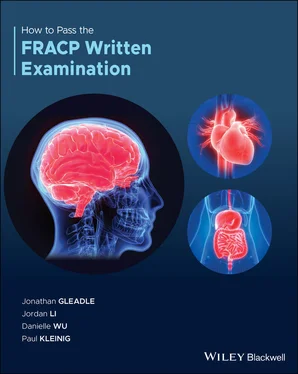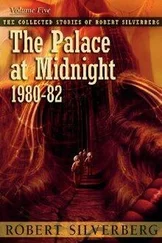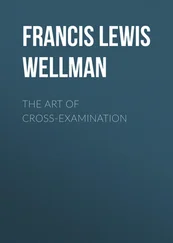Cardiac MRI (CMR) can directly evaluate RV size, mass, morphology, and function in an accurate and reproducible manner. CMR is now considered the gold standard for non‐invasive assessment of RV function, particularly as it provides additional information on RV anatomy and myocardial mass.
It is important to recognise and diagnose RVMI, as the treatment is different to LVMI and inferior MI. Please see the following principles of the RVMI management.
1 Reperfusion therapyPrimary percutaneous coronary intervention preferable to thrombolysis, this should be performed as early as possible to preserve right heart function.
2 Optimise RV preloadAvoid morphine, diuretics, β‐blockers, nitrates, ACE inhibitorTrial of judicious fluid administration in the absence of pulmonary oedemaConsider intravenous fluid therapy to increase right sided preload in the absence of pulmonary oedema.
1 Reduce RV afterloadInotropes, pulmonary vasodilators (nitric oxide, prostacycline)Intra‐aortic balloon pump.
1 Maintain chronotropic competence and atrioventricular synchronyAvoid β‐blockers in patients with proximal right coronary artery occlusionConsider dual‐chamber temporary pacing.

Kakouros N, Cokkinos D. Right ventricular myocardial infarction: pathophysiology, diagnosis, and management. Postgraduate Medical Journal. 2010;86(1022):719–728.
https://www.ncbi.nlm.nih.gov/pubmed/20956396
30. Answer: D
Permanent pacing for sinus node dysfunction is only indicated in patients with symptoms directly attributable to bradycardia, irrespective of minimum heart rate or pause duration.
Sinus node dysfunction is most often related to age‐dependent progressive fibrosis of the sinus nodal tissue and surrounding atrial myocardium. It may lead to abnormalities of the sinus node, and atrial impulse formation and propagation, which will therefore result in various bradycardic or pause‐related syndromes. Less common causes include acute myocardial ischemia, atrial tachyarrhythmias, electrolyte abnormalities, hypothyroidism, medications, infections, and metabolic abnormalities. Evaluation for these potentially treatable or reversible causes can be performed non‐urgently in most cases.
Nocturnal bradycardias should prompt consideration of screening for sleep apnoea. Nocturnal bradycardias are common in patient with sleep apnoea. Treatment of sleep apnoea not only reduces the frequency of nocturnal bradycardias but also might offer cardiovascular benefits. The presence of nocturnal bradycardia is not in itself an indication for permanent pacing.

Kusumoto F, Schoenfeld M, Barrett C, et al. 2018 ACC/AHA/HRS Guideline on the Evaluation and Management of Patients with Bradycardia and Cardiac Conduction Delay. Circulation. 2018.
https://www.ahajournals.org/doi/abs/10.1161/CIR.0000000000000628
31. Answer: A
This patient has classical clinical features of Takotsubo (stress) cardiomyopathy which was first described in 1990. Its characteristic finding is the left ventricular apex ballooning. Presenting symptoms include chest pain, dyspnoea, and syncope and can be similar to those in patients with acute coronary syndrome (ACS). 80% of patients have elevated troponin levels and 80% of patients have ischaemic changes on ECG and most have elevated levels of NT‐pro BNP.
Diagnosis of Takotsubo cardiomyopathy does not preclude the diagnosis of ACS. Up to 15% of patients with Takotsubo cardiomyopathy have concurrent coronary artery disease on coronary angiography. Diagnostic criteria for Takotsubo cardiomyopathy includes the presence of a transient abnormality in left ventricular wall motion beyond a single epicardial coronary artery perfusion territory, the absence of obstructive coronary artery disease or angiographic evidence of acute plaque rupture, the presence of new ECG abnormalities or elevation in cardiac troponin levels, and the absence of pheochromocytoma and myocarditis. There are four types of Takotsubo cardiomyopathy: apical type (in most patients) followed by the midventricular type, the basal type, and the focal type.
Takotsubo cardiomyopathy has a higher incidence in patients with a past medical history of neurological and psychiatric disorders, such as epilepsy, stroke, subarachnoid haemorrhage, electroconvulsive therapy, anxiety, and depression. Previous studies suggest Takotsubo cardiomyopathy is associated with emotional triggers. Subsequent studies have found the condition may also occur with physical triggers or even without preceding triggers. Takotsubo cardiomyopathy has a female predominance.
Takotsubo cardiomyopathy was once thought a benign disease with transient systolic and diastolic left ventricular dysfunction with a variety of wall‐motion abnormalities. However, rates of in‐hospital shock and death were similar in patients with Takotsubo cardiomyopathy and ACS. Other complications such as ventricular tachycardia, ventricular aneurysm, and ventricular rupture have been reported. The rate of major adverse cardiac and cerebrovascular events is 10% per patient‐year, and the rate of death is 5.6% per patient‐year, during long‐term follow‐up.
Angiotensin‐converting enzyme (ACE) inhibitors or angiotensin‐receptor blockers have been shown to improve survival at one year. Beta‐blockers showed no survival benefits at one year following diagnosis of Takotsubo cardiomyopathy.

Templin C, Ghadri J, Diekmann J, et al Clinical Features and Outcomes of Takotsubo (Stress) Cardiomyopathy. New England Journal of Medicine. 2015;373(10):929–938.
https://www.ncbi.nlm.nih.gov/pubmed/26332547
32. Answer: B
TAVI valves are bioprosthetic, so the recommendation is for dual antiplatelet therapy with aspirin and clopidogrel for 3–6 months, with aspirin continued lifelong.
Severe aortic stenosis (AS) is the most common form of valvular heart disease in the developed world, affecting 7% of adults older than 65 years. Most patients with early AS are asymptomatic. Currently, there is no evidence to support surgical aortic valve replacement (SAVR) or TAVI in asymptomatic patients, even with severe AS. However, once symptoms of angina, syncope, or heart failure develop, there is significantly increased mortality if untreated. SAVR remains the preferred treatment for low risk patients. For intermediate and high‐ risk patients, TAVI in suitable candidates is at least non‐inferior.
According to the largest trial comparing TAVI to SAVR, major complications include:
Major vascular complication rate (7.9% TAVI vs 5% SAVR).
Major stroke rate (3.2% TAVI vs 4.3% SAVR).
Heart block (secondary to direct compression of the bioprosthetic valve on the conduction tissue) requiring pacemaker insertion (8.5% TAVI vs 6.9% SAVR).
Acute kidney injury (1.3% TAVI vs 3% SAVR).
Other: Paravalvular aortic regurgitation (<5%), infectiveInfective endocarditis, catastrophic complications: coronary obstruction, aortic dissection, cardiac perforation (0.2–1.1%).

Adams H, Ashokkumar S, Newcomb A, et al. Contemporary review of severe aortic stenosis. Internal Medicine Journal. 2019;49(3):297–305.
Читать дальше
















